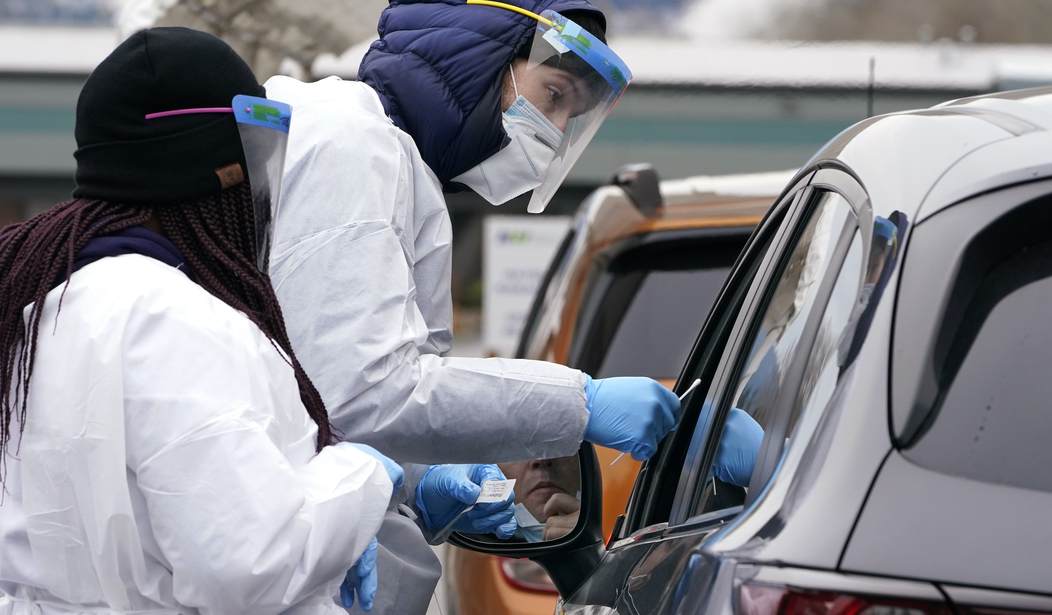One of the unresolved debates of the pandemic era is whether the zero-Covid public health strategy is the correct one. This strategy can be loosely defined as driving Covid-19 as close as possible to zero through strict control measures so that community transmissions no longer appear and, should that happen, be quickly re-suppressed. Initially, even Europe and the U.S. tried this (remember two weeks to flatten the curve?) but quickly gave up with the emergence of new variants, although through 2021 a number of small, or easily isolated, countries persisted in the attempt. As 2022 dawned, however, even these were giving up.
Australians have largely been content to endure their enforced isolation from the globe on the basis that life continued largely unaffected by a pandemic which has killed 5.4 million people globally to date. But that policy of Covid zero, dubbed “fortress Australia” or “the hermit kingdom”, has now been profoundly deserted after the arrival of the Omicron variant coincided with a loosening of Covid-era restrictions….
Though Omicron has driven the increase in cases – by last week it accounted for about 80% of all Covid infections in NSW – the end of Covid zero had long been mooted. As the two-dose vaccination rate reached above 80% in November and weariness with Covid-era restrictions rose, the prime minister, Scott Morrison, became increasingly bullish about the country’s re-opening.
“Planes are back in the air, the kids are back at school, the restaurants are opening and a big Christmas is coming for all of us,” Morrison said at the time.
The major country that has not retreated from the zero-Covid course and in fact doubled down is China. “Whatever the cost, China is likely to push extremely hard to keep the virus under control for most of this year, ahead of two high-profile, high-stakes events. Next month, Beijing will host the Winter Olympics, a gathering already dogged by diplomatic boycotts over human rights abuses. In the autumn the Communist leadership will meet for their 20th Party Congress: it is expected to officially extend Xi Jinping’s hold on power by another five years.”
They’ve rejected the alternative approach. which is to live with the virus by mitigating its effects through vaccines, better therapies for those who fall sick, and fostering cumulative immunity among the population. Some regard the administration of vaccines and ever more frequent boosters as potentially more dangerous than zero virus, fearing that tinkering with the immune systems of whole populations could lead to unforeseeable long-term results. Some suspect the Chinese government, knowing this — and in some versions of this scenario intending this — is content to inflict cumulative biological damage on the West, and its strange willingness to accept the costs of zero-Covid merely the price of world domination.
However, some argue that it’s simply Communist stubbornness that could boomerang because delaying the adaptation of a billion people to an inexorably advancing virus is like winding up a spring that will violently snap back should the zero-Covid policy eventually fail. “‘The health risks of opening China up to Covid are likely to be higher than in countries that abandoned their zero Covid policies,’ said Sean Yuji Sylvia, assistant professor at the University of North Carolina at Chapel Hill, whose research focuses on health economics and China’s health system.”
“There are several reasons why it makes sense for China to maintain strict controls for the time being,” Sylvia said. “China has a high population density and lower herd immunity in the population due to limited exposure to the virus and less-effective vaccines. “The health system is also relatively weak in much of the country and could easily be overwhelmed. And even if vaccines provide good protection against severe cases, patients with less-severe illness are more likely to be hospitalised in China.” The country’s hospitals are also manned by doctors who have little clinical experience of treating Covid, while professionals elsewhere now have two years’ painfully earned understanding of its development and how best to control it.
If the dam gives way without relief, it will collapse big time. “But if its path continues to diverge from the rest of the world’s, the costs and challenges of the zero-Covid approach are almost certain to rise. In 2020 and 2021, once China stamped out its initial outbreak, domestic spending picked up. Its factories resumed churning out goods for the world, adding Covid tests and other medical gear to their production line, for a pandemic that seemed to be passing the country by. Now, however, the economic calculus has become more complicated. Strict new lockdown and quarantine rules are affecting everything from global supply chains – as sailors wanting to return home must spend weeks in isolation – to factory output.” Restrictions are so strict that millions are not even allowed to leave home to buy food.
More than 13 million were ordered to stay at home last week as authorities sought to battle a Covid outbreak. But compared to other lockdowns globally, locals cannot go out even for essential reasons like buying food. The government is delivering supplies but many on social media say they are yet to receive them and are struggling. The lockdown on the northern city of Xi’an is in its ninth day. The city’s outbreak is the worst China has seen in months amid its zero-Covid strategy.
Doubts have been expressed over the astonishing effectiveness of Chinese controls, draconian as they are. “Chinese authorities have reported an extraordinary COVID-19 feat: A death rate that is 62 times better than Australia’s. If accurate, the official figures highlight the benefits of the world’s strictest zero-tolerance policy, which involved keeping borders closed and moving quickly to suppress small outbreaks. While many of its Asia-Pacific neighbours have given up on an elimination strategy, China continues to keep its borders mostly closed, with little prospect of them opening for another 12 months. Some might question whether such an extraordinary figure can be trusted, but many experts told the ABC the low death rate is plausible…” if clampdowns were supported by testing and screening carried out on a scale and speed unmatched anywhere on earth.
A pulmonary doctor at Beijing’s Chaoyang hospital who did not want to be named because he was not authorised to speak to the media, told the ABC that compulsory COVID-19 testing and early detection of cases was likely the key factor in preventing deaths. “Other countries don’t have the same ability to do COVID screening at the same speed or scale as China,” the doctor told the ABC. “It means infections are detected at a very early stage and medical intervention begins quickly.”
But other experts have questioned whether that would make such a dramatic difference.
The debate over which strategy is working, and how robust each is, will be settled by information. One of the missing pieces of the puzzle from the adaptation strategist’s point of view is how the population’s immune profile is changing over time with the application of vaccines and exposure to the virus, both aspects in which China lags. This can now be potentially monitored by monitoring individual and population Immunoglobulin G concentrations.
Antibodies are highly specialized proteins that bind very specifically to invading antigens, whether those invaders are viruses, bacteria, fungi, toxins, or other chemicals. … Immunoglobulin G, or IgG, are antibodies that circulate through the blood and are selected for their ability to identify a pathogen with great specificity. … IgG is produced by B-cells in your body’s germinal centers (lymph nodes, spleen, tonsils, etc.), and some of those B-cells are retained for a rapid response should you be exposed to the pathogen again. These retained cells are called memory B-cells and are part of your immune memory. …
Measuring IgG concentration is a way to monitor your immune system’s status.… Most viral infections are ultimately beaten back by your own immune system. And each time it emerges triumphant, your immune system can “remember” the way it achieved victory, increasing the odds of prevailing against future invaders. … IgG concentration could inform many clinical decisions if a quantitative test was readily available. Traditional rapid antibody tests use a technology called LFA, or lateral flow assays. While these tests can give you some information in certain situations, in general they are of low utility because they are a “qualitative” tests – that is, they give you a “Positive” or “Negative” readout.
But making decisions like whether or when to get a booster shot requires a level of accuracy and precision that is not feasible with a qualitative test like LFA. And while there are traditional lab tests that can provide a semi-quantitative readout of IgG, these tests require a venipuncture and take days to report results. Finally, even those lab tests were not able to report standardized units because an international standard was only recently developed by the World Health Organization for COVID-19 antibodies.
But with new tests, it is now possible to track a population’s resistance against the Covid-19 threat. “With a deeper understanding of antibodies, the promulgation of WHO antibody standards, and the development of immunity models using datasets from multiple COVID-19 vaccine trials, certain types of quantitative antibody tests may now provide a way to monitor individual or community immunity against COVID-19. Specifically, tests that quantitate the concentration of anti-RBD IgG –antibodies that target the receptor binding domain of the S1 spike protein component of the SARS-CoV-2 virus – show promise as a useful and scalable measure of the COVID-19 immunity of both individuals and communities.”
The tools are now available to answer the vexing question: is zero-Covid possible? One final piece remains missing from the puzzle: the role of animal virus reservoirs. According to the accepted account, Covid-19 originated in nature, the famous ‘bat’, which to this day has not been found. How can China expect to eliminate Covid in humans without extirpating it in nature? It is to guard against this possibility that NIH scientists have urged the pursuit of a universal coronavirus vaccine.
A growing body of scientific evidence, considered together with ecological reality, strongly suggest that novel coronaviruses will continue to infect bats and other animal reservoirs and potentially emerge to pose a pandemic threat to humans. To counter future coronavirus outbreaks, the global scientific and medical research community should focus a major effort now on three goals: characterize the range of coronavirus genetic diversity in multiple animal species; better understand coronavirus disease pathogenesis in laboratory animal models and people; and apply this knowledge to the development of long-lasting, broadly protective coronavirus vaccines.
And round and round it goes. Without some way of tracking the progress of these rival strategies, zero virus, and adaptation, publics are doomed to be trapped in an endless round of government-imposed lockdowns, boosters, restrictions, and border controls, seeking but never finding a way back to pre-pandemic 2019.
Books: The Real Anthony Fauci: Bill Gates, Big Pharma, and the Global War on Democracy and Public Health by Robert F. Kennedy Jr. The Real Anthony Fauci details how Fauci, Gates, and their cohorts use their control of media outlets, scientific journals, key government and quasi-governmental agencies, global intelligence agencies, and influential scientists and physicians to flood the public with fearful propaganda about COVID-19 virulence and pathogenesis, and to muzzle debate and ruthlessly censor dissent.










Join the conversation as a VIP Member